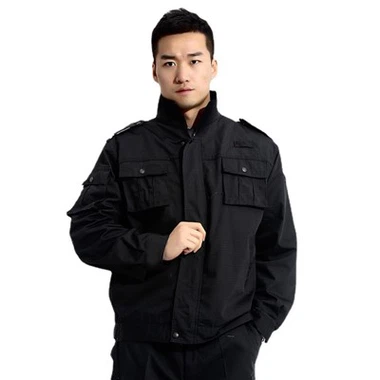which one is the real long-staple cotton?(PART 1)
Apr 25, 2025
There are countless types of clothing and home textile products made from cotton. Among them, long-staple cotton is probably the most well-known.
The vast majority of consumers know that long-staple cotton is of high quality and expensive. Therefore, many merchants mention long-staple cotton frequently when promoting their products. There are terms like "Xinjiang long-staple cotton", "Pima cotton", "Egyptian cotton" and "Sea Island cotton", but the prices range from dozens to thousands of yuan. Ordinary consumers are getting more and more confused: If they are all long-staple cotton, why is there such a big price difference? What are the differences among them exactly? And how can we distinguish the genuine from the fake?


Today, let me use this article to talk about long-staple cotton, which is a major area where merchants often make false promotions and consumers easily fall into traps.
To understand long-staple cotton, we need to have some knowledge about cotton first.
Cotton is a plant of the genus Gossypium in the family Malvaceae. Although it is called a "flower", it is not actually a flower. The cotton we commonly see in daily life is actually its fruit, that is, the cotton boll. The cotton lint on the cotton boll is what we usually call the raw material of cotton fibers.
And the real the flower of cotton looks like this. Isn't it quite beautiful?
1.Classification of Cotton
There are four major cotton species: Asiatic cotton, African cotton, Upland cotton, and Sea Island cotton. According to the current mainstream classification standards (fiber length and quality), it can be divided into the following three categories:
a) Long-staple Cotton - The Highest Quality Cotton
It is Sea Island cotton, which is native to South America, Central America, and the islands of the Caribbean Sea. Its fibers are long (≥33mm), fine, soft, glossy, and have high strength. Therefore, it is the highest quality variety among cottons and is mostly used for spinning high-quality cotton yarns above 80 counts.
b) Fine-staple Cotton - The Most Common Cotton
That is Upland cotton, which is the most commonly planted variety in China and also globally, accounting for more than 90% of the world's total cotton output. Its fiber length (around 30mm), fineness, and strength are moderate. It is generally used for spinning medium to high-quality cotton yarns with a thickness below 80 counts.
c) Coarse-staple Cotton - The Phased-out Cotton
Asiatic cotton and African cotton (Levant cotton) are the main cotton species in ancient China. Its fibers are short (≤25mm) and relatively thick and hard, so its use value is low. It has now been basically phased out by the market.

2.Definition of Long-staple Cotton
According to China's standards, long-staple cotton is actually Sea Island cotton. They are the same thing, just with different names.
The history of growing long-staple cotton in China is very short. In the 1950s, China successfully introduced Soviet Sea Island cotton varieties in Xinjiang, marking the beginning of the chapter of Xinjiang long-staple cotton. Over the past few decades, through the continuous efforts of Chinese scientific researchers, many new excellent varieties have been cultivated, such as the Xinhai series and Junhai series.
Generally speaking, the longer the cotton fibers, the better the quality of the cotton. This is because the spun yarn will have fewer exposed fibers, and the finished product will be softer and more glossy. So, is it the case that as long as the length is long enough, it is long-staple cotton? Actually, no.
The hard standard for long-staple cotton is indeed its length, but the real long-staple cotton is not just "long". Long-staple cotton is not only long, but also fine, and has high strength. Therefore, only the variety of Sea Island cotton (Gossypium barbadense) is the genuine long-staple cotton.
It was mentioned earlier that the length standard for long-staple cotton is ≥33mm, which is in line with China's national standard "GB/T 19635-2024 Cotton - Long-staple Cotton". The mainstream international classification standard divides cotton fibers into four grades according to their fiber length:

According to international standards, long-staple cotton (Long staple) has a fiber length of 29-34.9mm, and extra-long-staple cotton (ELS) has a fiber length of ≥34.9mm. China's standard for long-staple cotton is ≥33mm, which actually covers international ELS cotton and some long-staple cotton. Personally, I speculate that this difference should be due to the actual situation of domestic long-staple cotton varieties. Because the fiber length of Xinjiang long-staple cotton in China mostly ranges from 33 to 39mm, while the fiber length of international extra-long-staple cotton represented by American SUPIMA cotton and Egyptian GIZA cotton is all above 35mm. Therefore, China's standard should take into account both the reality of domestic agricultural production and the needs of the textile industry.
Whether globally or in China, the output of long-staple cotton is very low and accounts for a tiny proportion. In 2023, the global output of long-staple cotton was about 600,000 tons, accounting for only 3% of the total cotton output (data source: ICAC). And Xinjiang long-staple cotton in China accounts for less than 1% of the country's total cotton output.
Long-staple cotton is different from ordinary fine-staple cotton. Its growth cycle is 10-15 days longer. It also requires better sunlight and water sources. Moreover, in order to protect the fibers and increase the output, it mainly relies on manual picking. Of course, there have been great breakthroughs in the mechanized harvesting of long-staple cotton in recent years, but manual picking is still the main method. Therefore, its cost is much higher than that of ordinary fine-staple cotton. So, the price of long-staple cotton is very high, at least 1.5 times the price of ordinary fine-staple cotton.
With low output and high price, long-staple cotton is destined to be a very niche category.
To Be Continue:What are the differences among different types of long-staple cotton? Are Egyptian cotton and Pima cotton long-staple cotton? And what are the differences between them and Xinjiang long-staple cotton?






